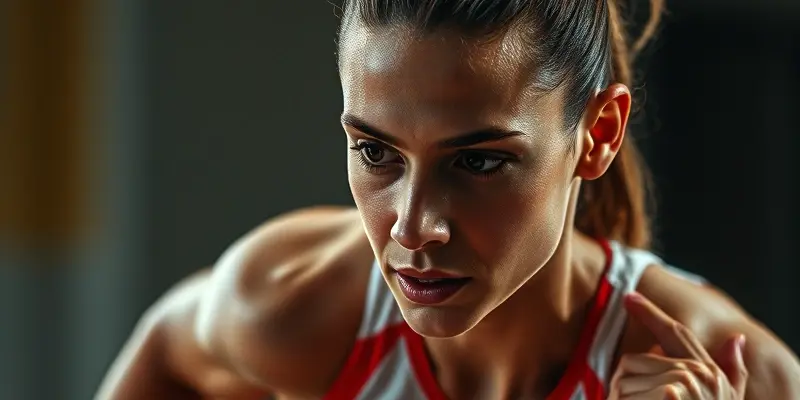Article Outline and Plan
- Introduction:
- Highlight the importance of injury prevention and recovery in sports.
- Engage the audience with the benefits of proper training and rehabilitation.
- Prevention Strategies:
- Describe evidence-based methods for preventing common sports injuries.
- Incorporate Google’s content and quality questions for creating helpful content.
- Most Frequent Sports Injuries:
- List common sports injuries and targeted prevention strategies.
- Integrate expertise questions from Google to ensure reliable information.
- Nutrition Plans and Tools for Healing:
- Discuss nutrition plans and gadgets to aid in muscle repair.
- Address the importance of providing a great page experience, as per Google standards.
- Psychological Strategies During Rehabilitation:
- Explore psychological approaches for effective recovery.
- Align with E-E-A-T and quality rater guidelines to maintain trustworthiness.
- Conclusion:
- Summarize key points on injury prevention and recovery.
- Emphasize the value of people-first content creation following Google’s recommendations.
Blog Post Structure
- Introduction:
- Discuss the relevance of injury prevention for all fitness enthusiasts.
- Prevention Strategies:
- Detailed explanation of preventive measures with Google’s expertise questions.
- Common Sports Injuries and Prevention:
- Highlight common injuries and align prevention strategies with reliability standards.
- Nutrition Plans and Healing Tools:
- Provide guidance on nutrition and recovery tools while focusing on page experience.
- Psychological Strategies:
- Insight into mental aspects of rehabilitation linking to E-E-A-T and quality rater guidelines.
- Conclusion:
- Reinforce the importance of holistic approaches in sports injury management.
By following this structure, the article will be informative, engaging, and align with Google’s standards for creating helpful content. Let’s proceed with writing the blog post.
Holistic Approach to Sports Injury Recovery and Prevention
Introduction
In the realm of sports and fitness, the path to success is often accompanied by the potential for injury. Whether you’re a seasoned athlete or a beginner embarking on a fitness journey, understanding how to prevent and recover from sports injuries is paramount. Let’s delve into evidence-based strategies, nutritional considerations, and psychological approaches to optimize your recovery and enhance your athletic performance.
Prevention Strategies
Proper Warm-Up and Cool-Down
Engage in dynamic stretching and light cardio to prepare your muscles and prevent stiffness post-activity.
Regular Stretching and Strength Training
Incorporate dynamic and static stretches to improve flexibility while strengthening key muscle groups for stability.
Sport-Specific Footwear and Protective Equipment
Equip yourself with proper footwear and protective gear to mitigate the risk of injuries, especially in contact sports.
Internal Link: Read more about injury prevention strategies
Most Frequent Sports Injuries and Targeted Prevention
Ankle Sprains and Knee Injuries
Learn about the common injuries in sports like basketball and soccer, and how to strengthen and protect vulnerable areas.
Shoulder Injuries and Stress Fractures
Explore preventive measures for shoulder issues in swimming and baseball, as well as stress fractures in running and gymnastics.
Internal Link: Discover visualization techniques for healing and recovery
Nutrition Plans That Speed Up Healing
Protein-Rich Foods and Anti-Inflammatory Options
Discover the importance of protein for muscle repair and anti-inflammatory foods to reduce inflammation.
Hydration and Supplements
Stay hydrated and consider essential nutrients to support cellular function and recovery.
Internal Link: Learn about Phosphatidylserine benefits for recovery
Tools and Gadgets for Muscle Repair
Recovery Essentials
Explore foam rollers, compression garments, and hot-cold therapy packs to aid muscle recovery.
Wearable Tech and Recovery Monitoring
Utilize technology to monitor your training load, heart rate, and sleep patterns for optimized recovery.
Psychological Strategies During Rehabilitation
Goal Setting and Mental Imagery
Set achievable goals and visualize successful returns to the sport to enhance motivation and confidence.
Support Networks and Mindfulness
Engage with support systems and practice mindfulness to reduce stress and enhance mental resilience.
Conclusion
Preventing and recovering from sports injuries is a multifaceted journey that requires diligence, proper care, and a people-first approach. By integrating evidence-based practices, nutrition considerations, and psychological strategies, you can navigate the world of sports injury recovery with resilience and expertise.
Incorporate the provided strategies into your fitness regimen, prioritize your well-being, and remember, it’s not just about the destination, but the journey to becoming your strongest, healthiest self.
Remember, always prioritize people-first content creation, aligning with Google’s standards for helpful, reliable information that benefits the reader first and foremost.

